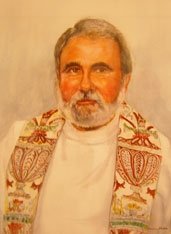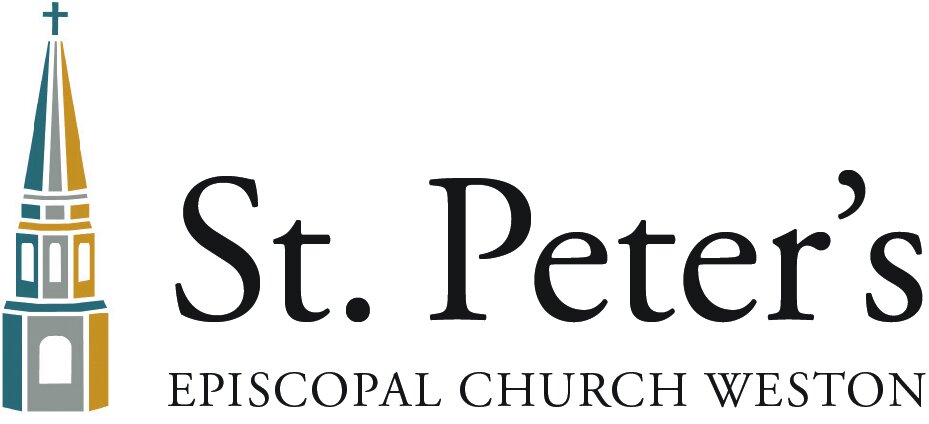St. Peter’s History
1865 – 1917
Pictorial History of St. Peter’s | 1865 to 2016
1865 – 1917
In 1865, Mrs. Daniel Lamson, dismayed by the gradual introduction of Unitarian theology into Congregational practices, broke away from the First Parish to establish the first Episcopal services in Weston. For many years, there was no church building or rector. Informal prayer services were held in various homes, and then, for a time, in a small white schoolhouse that is still standing on the Boston Post Road. These early parishioners were mostly women, and, like Mrs. Lamson, they were born in England and confirmed as Anglicans.
Weston’s first Episcopal rector, The Reverend Arthur Papineau, arrived in 1901. Armed with a revolver and blank cartridges to frighten off farm dogs, he bicycled seventeen miles from Maynard every other Sunday after conducting services there. By 1905, the congregation had grown, and the services were moved from the Fiske house on Merriam Street to the old Town Hall – also used by the Roman Catholics in town – where a desk served as the lectern and a fruit bowl as the baptismal font.
Within a decade, there were thirty-six families attending regularly, and, on January 1, 1914, the Weston group officially became St. Peter’s Church, a mission of the Diocese, named after St. Peter’s Church in Weston, England. In 1915, The Reverend Frederick Reeve succeeded Father Papineau.
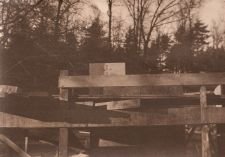
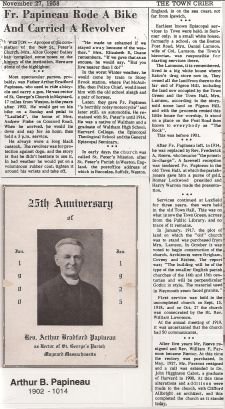
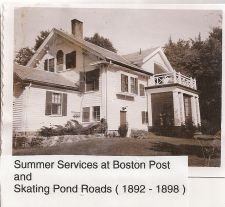
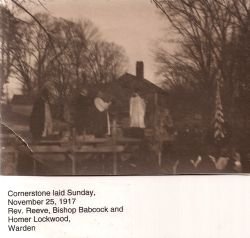

1917-1927
Pictorial History of St. Peter’s | 1865-2016
1917-1927
In 1917, the first St. Peter’s Church, a “perpendicular Gothic,” now the Christian Science Church, was built on Lamson property at 439 Boston Post Road in Weston in a “spirit of unity and concord.” Such spirit had its limits, however, and one prominent member resigned over the heated issue of planting ivy on the church’s stone walls. He objected, he said, to the symbolism of a “clinging” plant.
In 1920, The Reverend Mr. Reeve, “an angel on two feet,” resigned, and was replaced by The Reverend William Parsons, or Parson Parsons as he liked to be called. Mr. Parsons, an antique bottle collector, was elderly, witty, and very “low church.” Every Sunday he conducted Morning Prayer services, celebrating communion once a month. He also started a boys’ choir, accompanied by a hand-pumped organ that often wandered off-key, leaving both choir and congregation in bewildered disharmony.
The Reverend Dr. John Higginson Cabot, who was scholarly, reserved, and decidedly “high church,” succeeded Parson Parsons in 1927. A member of the Order of the Holy Cross, he wore the elaborate Anglican vestments appropriate to each occasion, and the services became more “Anglo-Catholic,” with frequent celebration of the Eucharist. During these years, the parish grew and prospered, and the seating capacity of the Church was expanded.
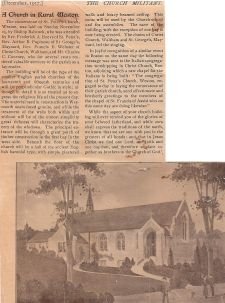
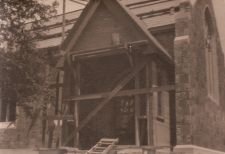
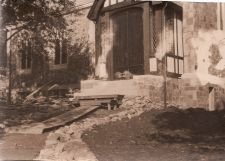
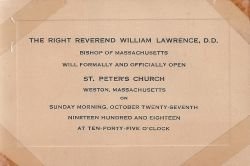
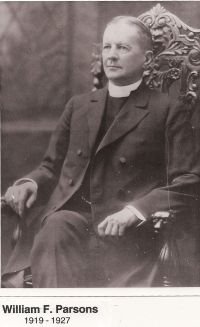
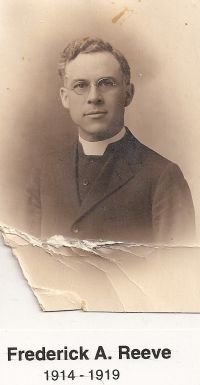
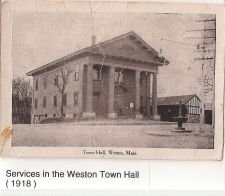
1927-1969
Pictorial History of St. Peter’s | 1865 – 2016
1927-1969 and New Building
In 1931, The Reverend Stephen Webster, both handsome and charming, succeeded Dr. Cabot and continued the Anglo-Catholic tradition until 1942, when The Reverend Dr. Egisto Chauncey became rector. As “low church” as his predecessors had been “high”, Dr. Chauncey disposed of the bells and the incense, which have not been used since. In 1947, there were 176 families in St. Peter’s Church.
By 1953, there were 274 families, and the church building, no longer large enough, was unsuitable for expansion. Charles O. Richardson, a member of the First Parish Church, generously donated the piece of property on which the “new” St. Peter’s Church now stands, and a building committee was appointed to select the appropriate style of architecture. It was not an easy decision, but after extended and often bitter discussions, the committee agreed the church should be of Georgian design. “Now we have unanimity of opinion, no one is completely satisfied,” said one exhausted committee member.
The Reverend Philip Krug became the fifth rector of St. Peter’s Church in 1957 when Dr. Chauncey retired. Phil Krug and his wife Lee remained a presence for many years after that and their children, Stefan, Corbin, Adrienne, and Kevin, grew up at St. Peter’s. Among Phil’s many accomplishments was the founding of the Roxbury-Weston Nursery School. St. Peter’s current facility was completed by late 1959. (Please see the 50th Anniversary History page when Phil preached for the 50th Anniversary of the completion of the new church building. He was our rector at the time of this event!) There were 380 families listed as members of the parish, many of them from Wayland, which had no Episcopal church of its own.
Mr. Krug resigned in 1975 after 18 years as rector.
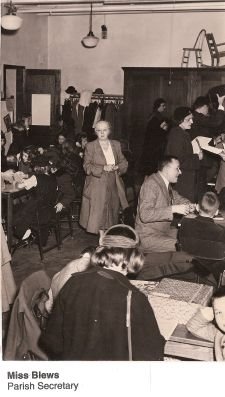
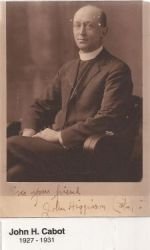
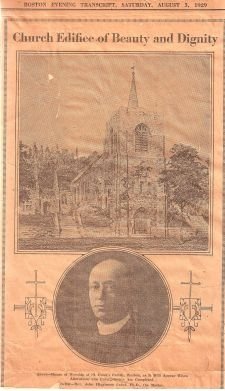
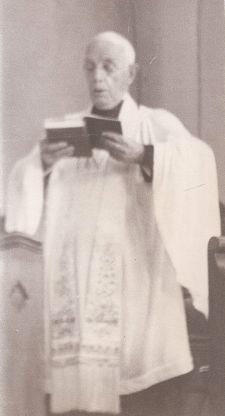


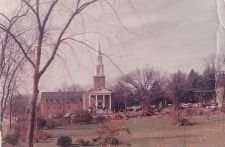
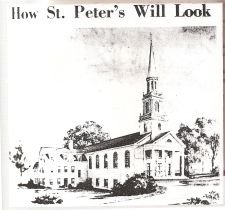
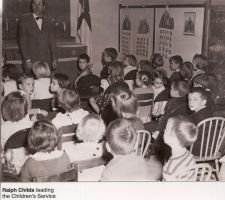
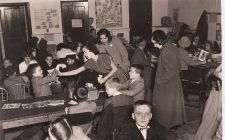
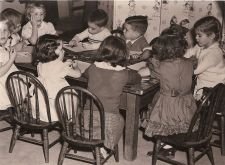
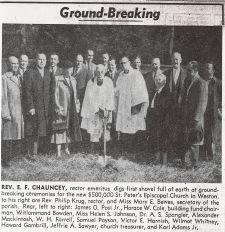
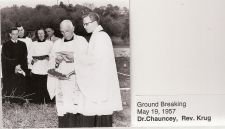
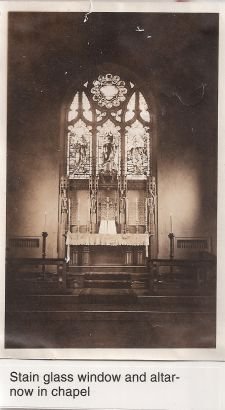
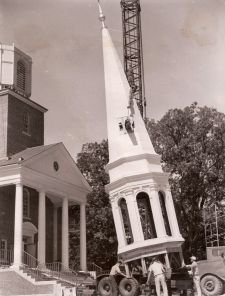
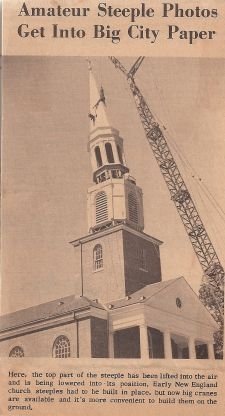
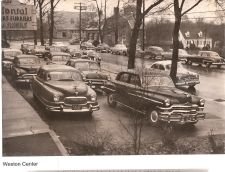
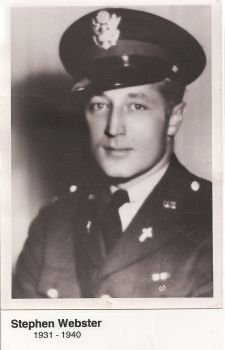
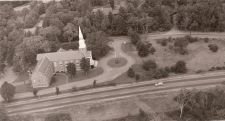

1960-1992
Pictorial History of St. Peter’s | 1865 – 2016
1960-1992
In 1964, Wayland’s Church of the Holy Spirit, first founded as a mission church sustained by St. Peter’s, became an independent parish. Over 50 families from St. Peter’s left to join that parish.
The 1960’s were a time of turmoil both within the church and without. Church attendance decreased everywhere. In 1969 St. Peter’s reduced the number of Sunday services from three to two. Conflicts over civil rights and Vietnam polarized attitudes within the congregation, especially in the area of social action There were those who believed in reaching out, and those who believed in turning inward.
Mr. Krug resigned in 1975 after 18 years as rector.
( St. Peter’s current facility was completed by late 1959 when Phil Krug was rector. Please see the 50th Anniversary History page when Phil Krug preached for the 50th Anniversary of the completion of the new church building, a very amazing event!)
In March of 1976, the Reverend David Van Dusen became the sixth rector of St. Peter’s Church. Under his leadership, the church gradually increased its Outreach Program, and developed a strong lay ministry. Controversy was openly faced and discussed. St. Peter’s is a stronger community today because of those experiences. After serving as rector for 15 years, Mr. Van Dusen retired in June, 1991.
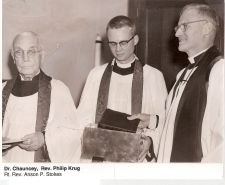
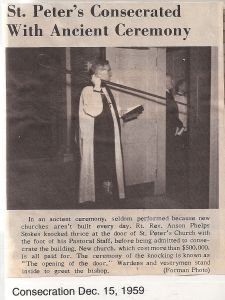
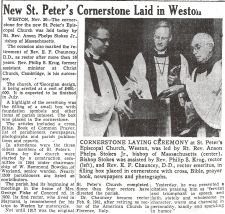
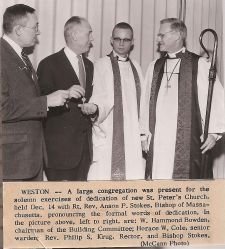
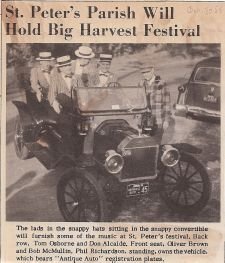
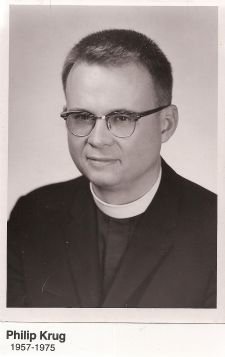
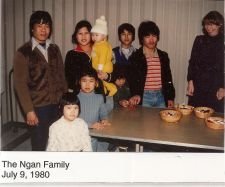
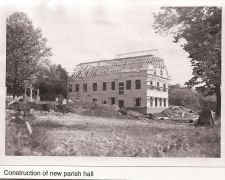
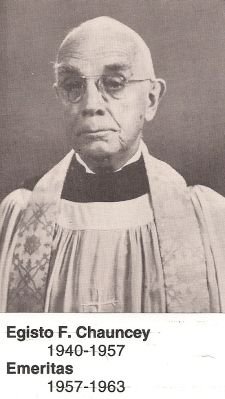
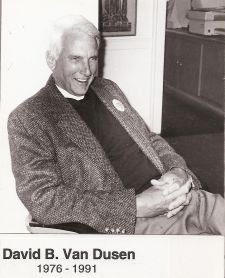
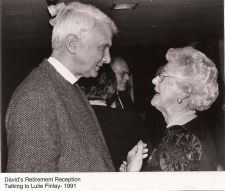
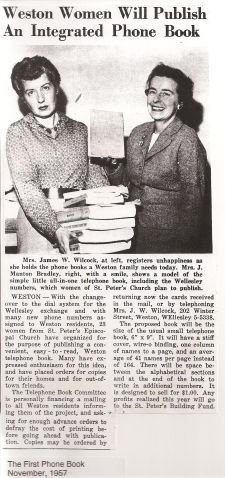
1992-2016
Pictorial History of St. Peter’s | 1865 – 2016
1992 – 2016
In 1992, The Reverend Charles Parthum became the seventh rector. His wife, The Reverend Catherine Powell, became the assistant and head of the Church School. Mr. Parthum, previously a lawyer, brought a broader sense of how St. Peter’s should present itself to the world. During his ministry: sorely needed improvements were made to the property, a communications program with an enhanced church newsletter established, regular articles appeared in local newspapers. In addition, Creation Sunday was instituted, Catechesis of the Good Shepherd – Ms. Powell’s nationally recognized program for very young children – and adult education were offered. Mr. Parthum and Ms. Powell resigned.
In 1997, The Reverend Carol Flett became priest-in-charge and three years later became the eighth Rector. Ms. Flett brought new energy and spirituality, and many new programs were started: Befriender Ministry, book groups, Friday Prayers, adult education programs on Sunday, and an Anti-Racism Awareness Program. While at St. Peter’s, Ms. Flett earned her Doctorate of Divinity from the Episcopal Divinity School and hired a full time Assistant, The Reverend Nick Morris-Clement, who headed the Youth Ministry in 2002 and 2003. In response to the growth of the parish, Dr. Flett began to develop a program- church structure. After serving as Priest in Charge and as Rector for a total of 7 years, Dr. Flett resigned in 2004.
The Reverend John de Beer became Interim Priest in June 2005. He introduced an intergenerational Communion service and a six-week dinner and discussion series for adults called “Connect?” and guided St. Peter’s through the rector search process.
2006-2016
The Reverend Stephen Voysey began serving St. Peter’s Episcopal Church as its ninth Rector on December 1st, 2006. He came to St. Peter’s following over ten years of ministry as rector of St. Mark’s Episcopal Church, Mount Kisco (Westchester County), New York and a total of twenty-nine years of parish ministry experience. His wife, Amanda, was Patient Advocate at Caritas Good Samaritan Hospital in Brockton. The Voyseys resided at St. Peter’s rectory which, at the time, was located on Colpitts Road in Weston.
A native of Winnetka, Illinois, Stephen graduated from New Trier Township High School in 1968, completed a Bachelor’s Degree cum laude at the University of Pennsylvania and a Master’s Degree in American Studies at Rutgers University. He received the Master of Divinity degree from Episcopal Divinity School, Cambridge, Massachusetts, and was ordained in 1977.
He strove to encourage the development and nurturing of a multi-generational Christian community which made space for a wide range of perspectives within the Christian vision. He enjoyed coordinating and taking part in educational program life for all ages and valued our strong church music program.
A portion of this information is excerpted from An Informal Early History of St. Peter’s Episcopal Church, Weston by Alice Cooper Baily. Edited and revised by Douglas Henderson, and History of St. Peter’s Church by Catherine Warren, 1983; and amended.

